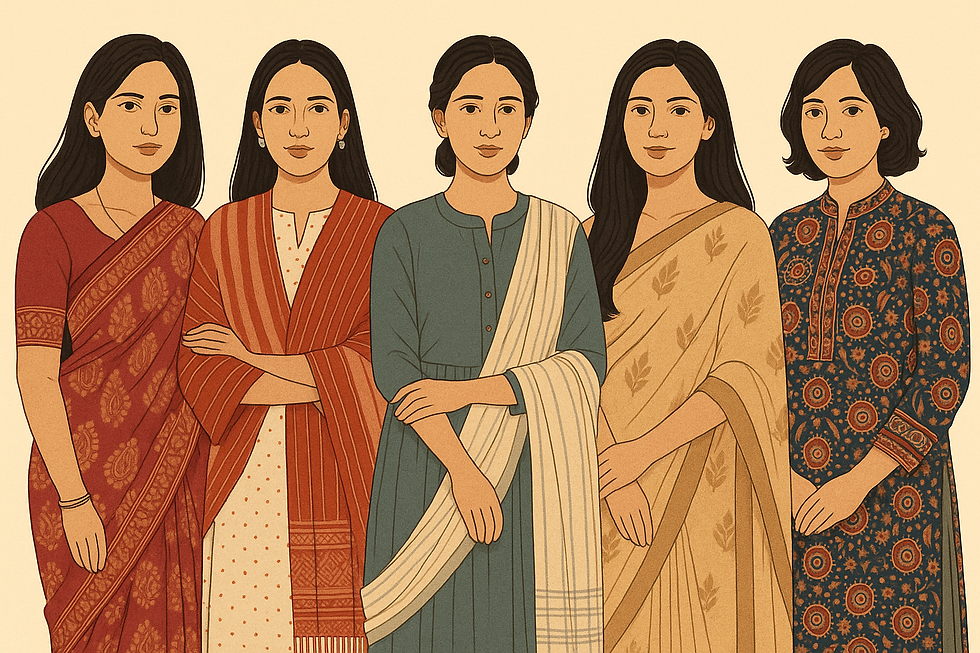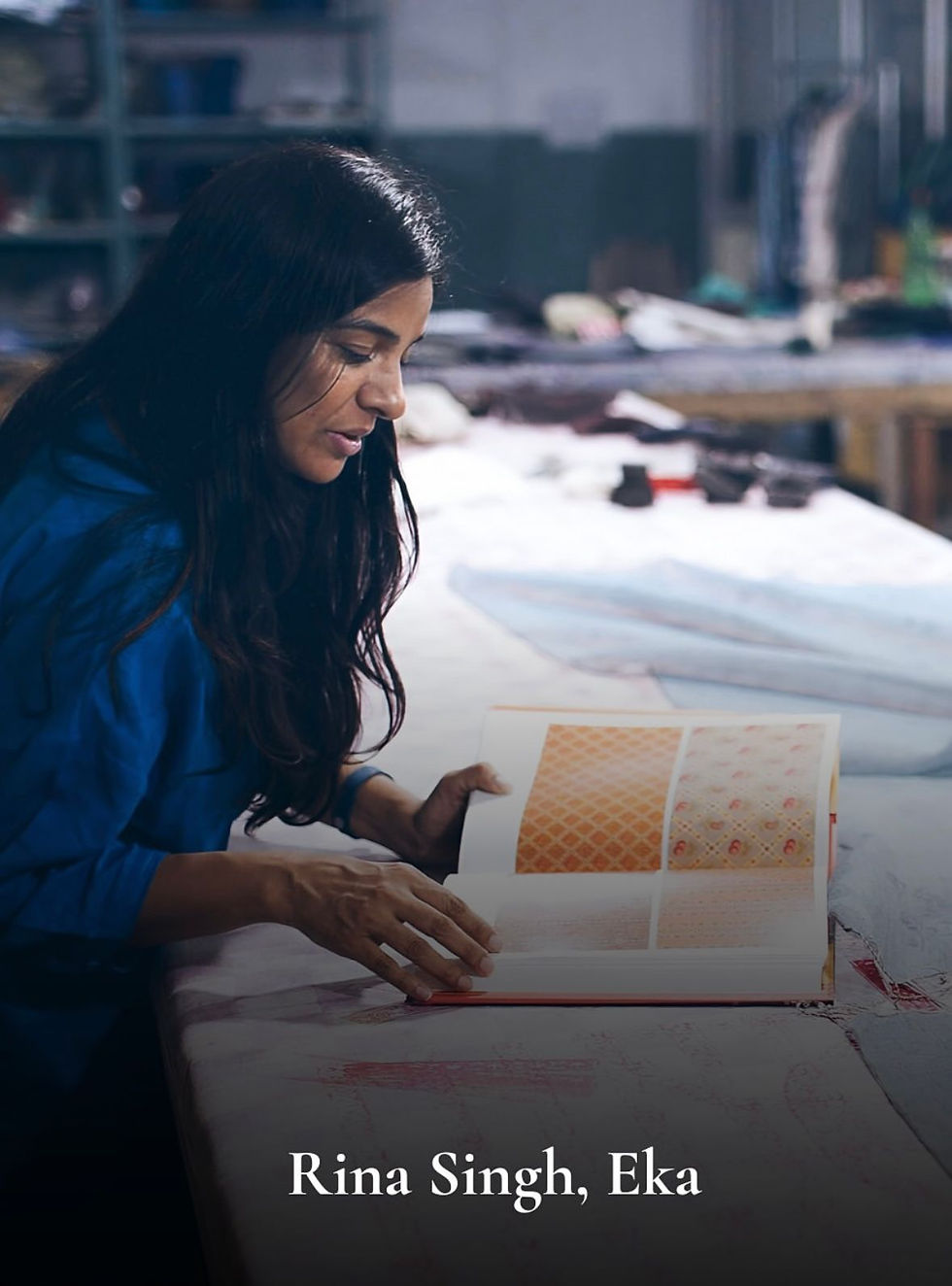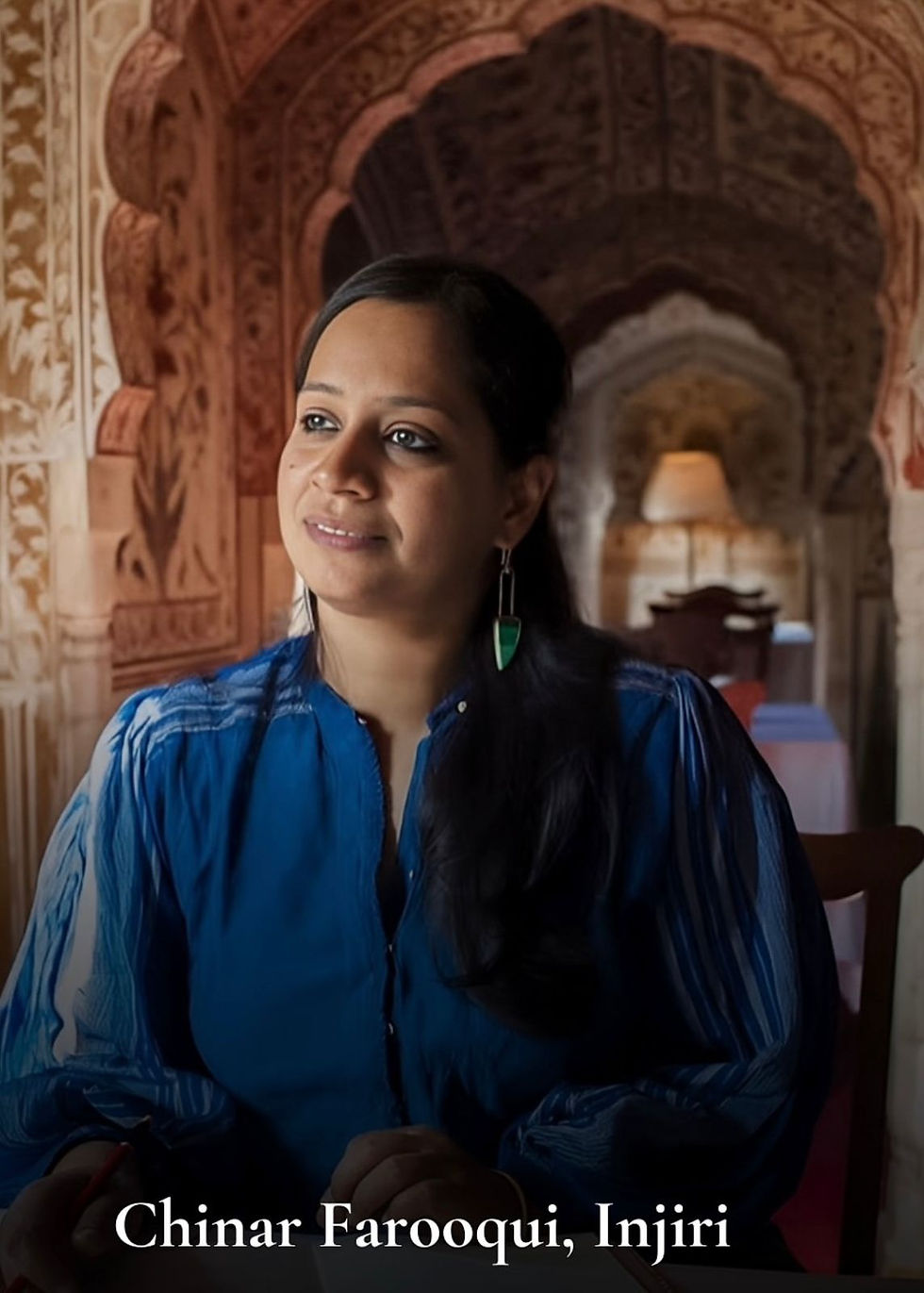Women Designers on the Future of India’s Textiles: Tradition, Sustainability & Global Influence
- Manpreet Kour
- Sep 2
- 2 min read

Indian textiles have always been a story of resilience, beauty, and heritage. From Banarasi silks to khadi, from ikat to linen, every weave carries centuries of tradition. But what makes Indian textiles truly exciting today is how women designers are redefining them for the future.
Designers like Palak Shah (Ekaya Banaras), Gaurika Rai (Wrap ‘N Weft), Rina Singh (Eka), Anavila Misra (Anavila), and Chinar Farooqui (Injiri) are at the forefront of this transformation. They are not just preserving crafts but also reimagining them, making Indian fashion more sustainable, contemporary, and global.
1. Designer Palak Shah - Ekaya Banaras

Palak Shah has breathed new life into Banarasi handloom sarees through Ekaya Banaras. Once seen only as bridal wear, Banarasi weaves now find a place in everyday wardrobes. Palak focuses on empowering women weavers and bridging the gap between age-old craft and modern luxury.
Her work represents a powerful shift, making heritage accessible and fashionable for younger generations.
2. Gaurika Rai – Wrap ‘N Weft

Gaurika Rai’s label Wrap ‘N Weft is rooted in weaving traditions. She blends eco-conscious practices with timeless designs, showing that Indian textiles can be sustainable without losing their beauty. Her vision emphasizes slow fashion and ethical production, two pillars that will shape the future of textiles worldwide.
3. Rina Singh – Eka

Minimalism meets tradition in Rina Singh’s Eka. She works with khadi and handlooms but presents them in modern silhouettes loved across the globe. Rina’s designs reflect a “global-local” philosophy, textiles that are Indian at heart but resonate with international fashion markets.
4. Anavila Misra – Anavila

Known as the pioneer of linen sarees, Anavila Misra has made handwoven textiles chic, comfortable, and aspirational. Her philosophy is simple yet powerful: fashion should feel as good as it looks. By reinventing traditional drapes with natural fabrics, she has made Indian textiles appealing to modern women who value both elegance and ease.
5. Chinar Farooqui – Injiri

Through Injiri, Chinar Farooqui tells stories of India’s weaving traditions. Every garment is handmade, dyed naturally, and crafted by artisans. Injiri reflects the charm of slow fashion where each piece carries meaning, not just style. This approach places Indian textiles firmly in the luxury sustainable fashion space.
The Collective Impact: Redefining Indian Textiles
What ties these women together is their commitment to heritage and sustainability. They have shown that Indian textiles are not just about the past; they are a blueprint for the future.
They promote sustainable fashion over fast fashion.
They empower women artisans and weavers.
They position Indian textiles on the global fashion map.
In their hands, tradition becomes innovation, and heritage becomes a movement for the future.
Women Leading the Future of Fashion
The success of these women designers reflects a larger truth, when women lead, industries transform. By giving voice to artisans, embracing eco-conscious methods, and inspiring global fashion conversations, they’re ensuring that Indian textiles remain timeless yet forward-looking.
At Skillinabox, we share the same belief. Our Fashion Designing Program empowers women from all walks of life to embrace their creativity, learn industry-ready skills, and shape the future of fashion.
Begin your journey into the world of design with us here: Skillinabox



Comments